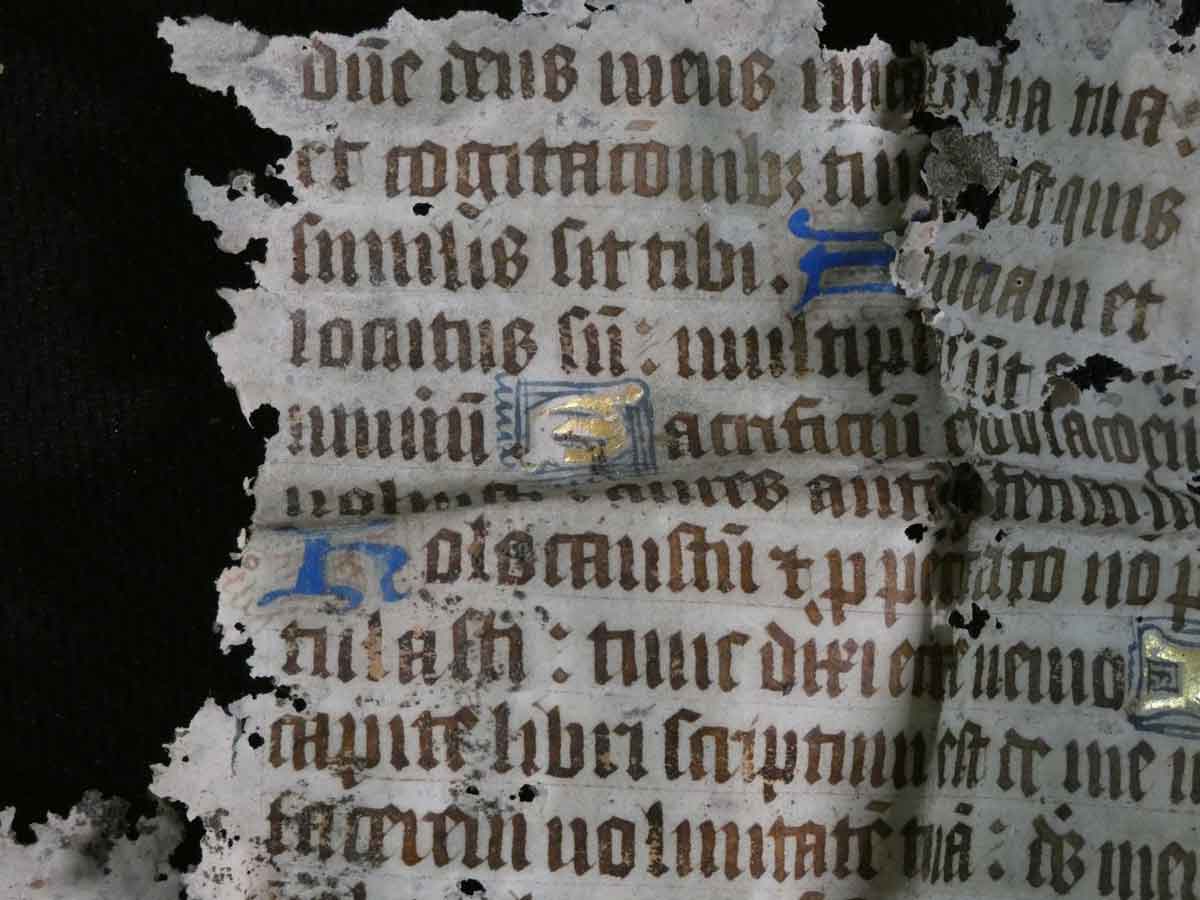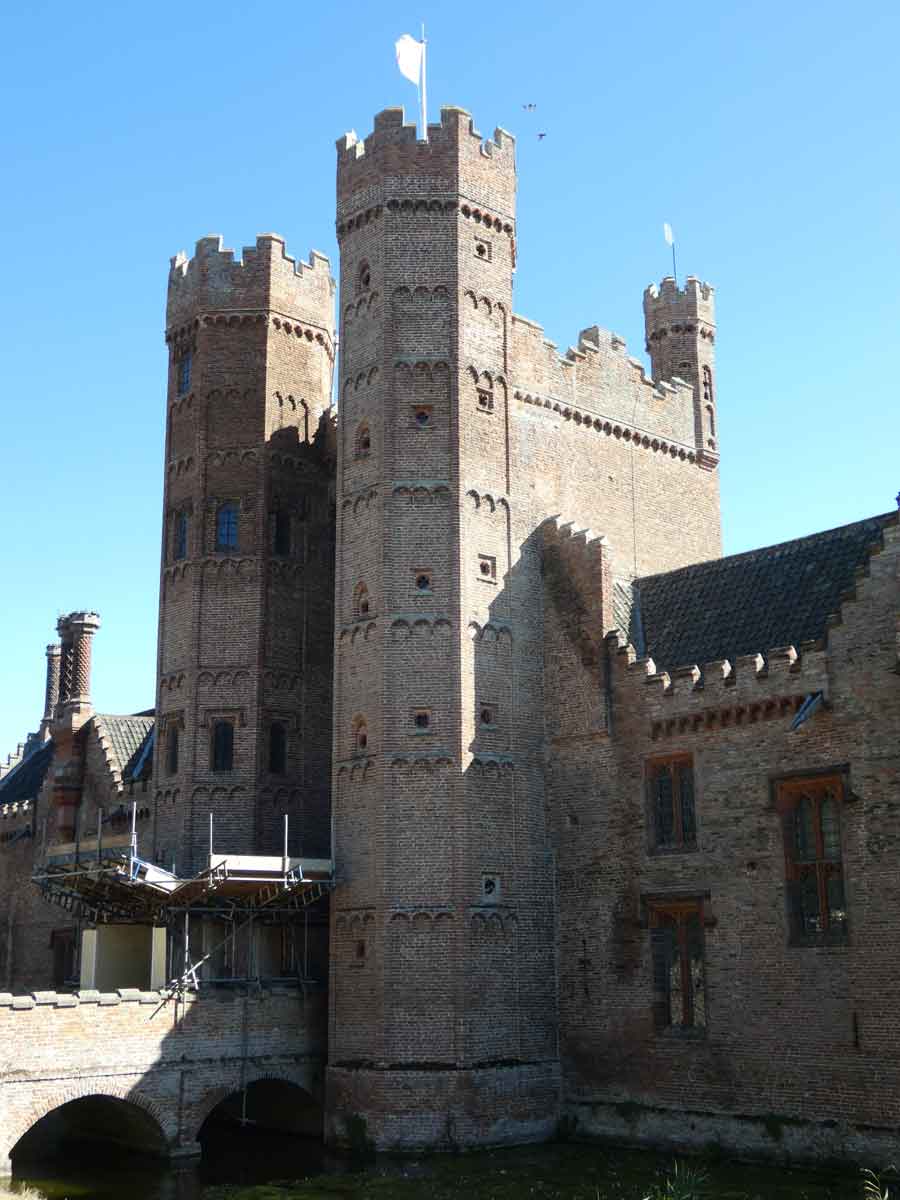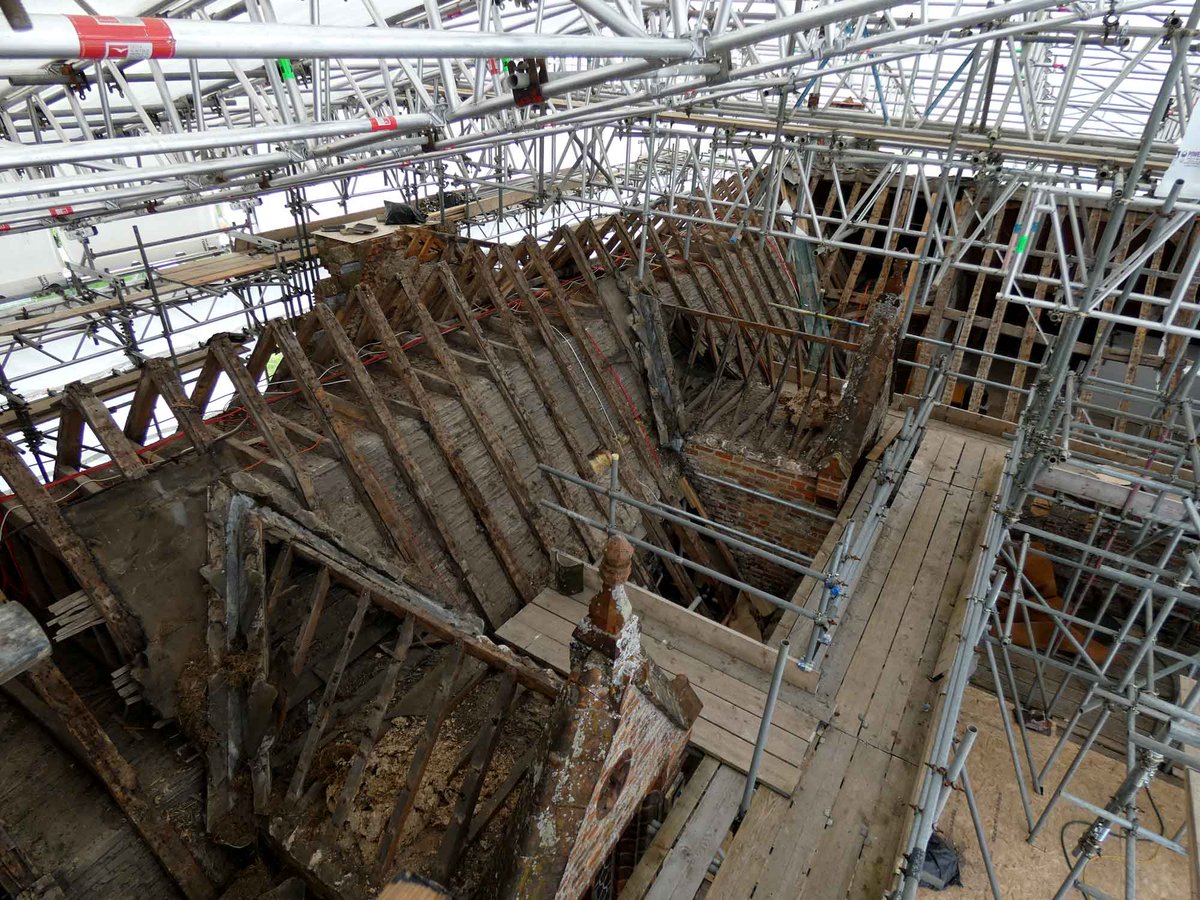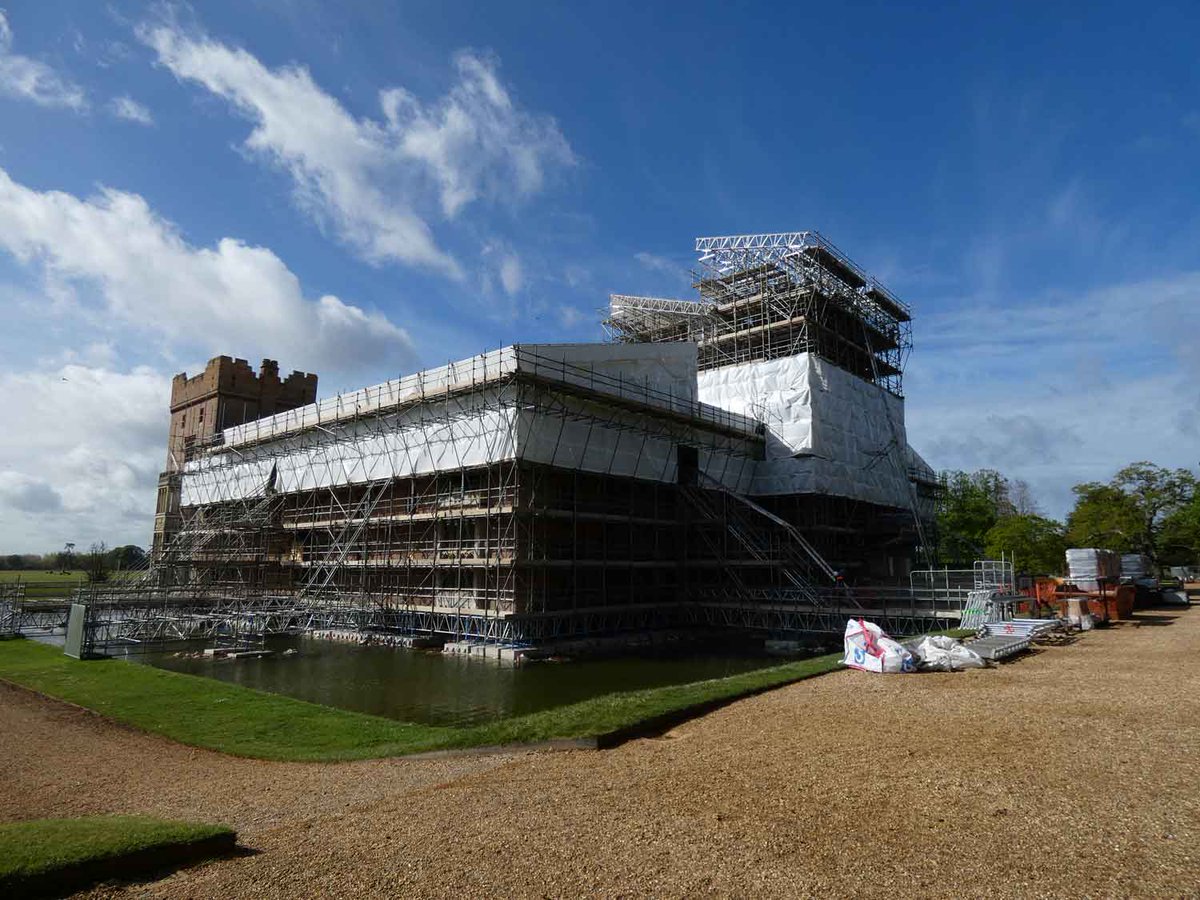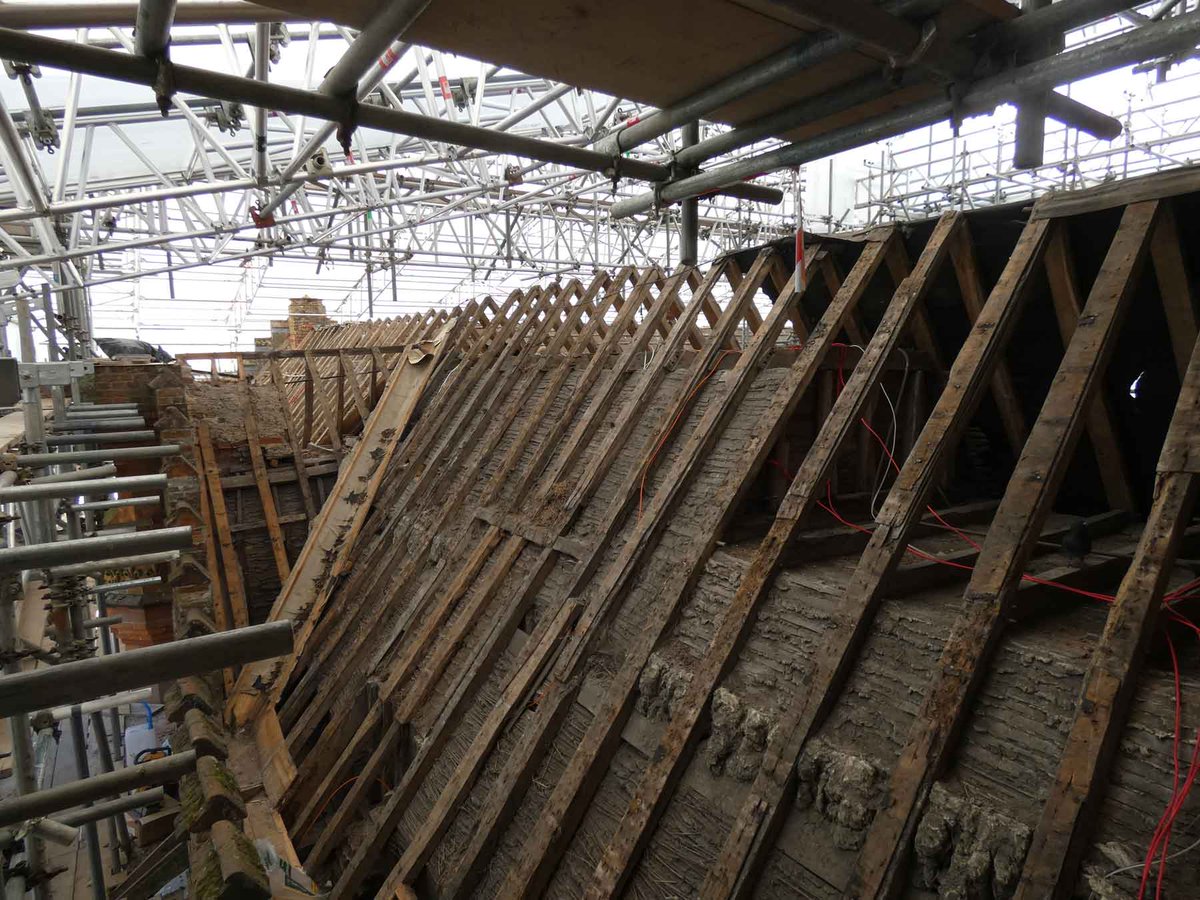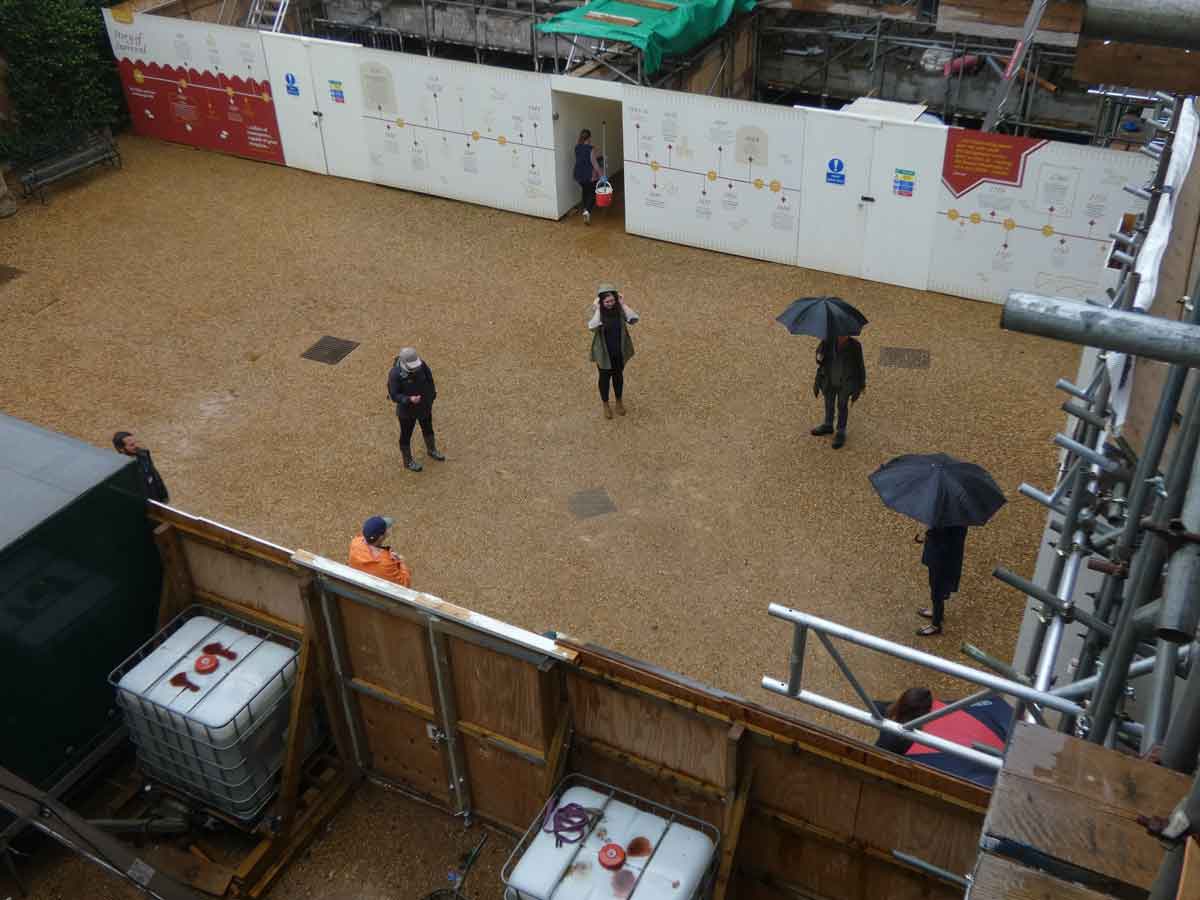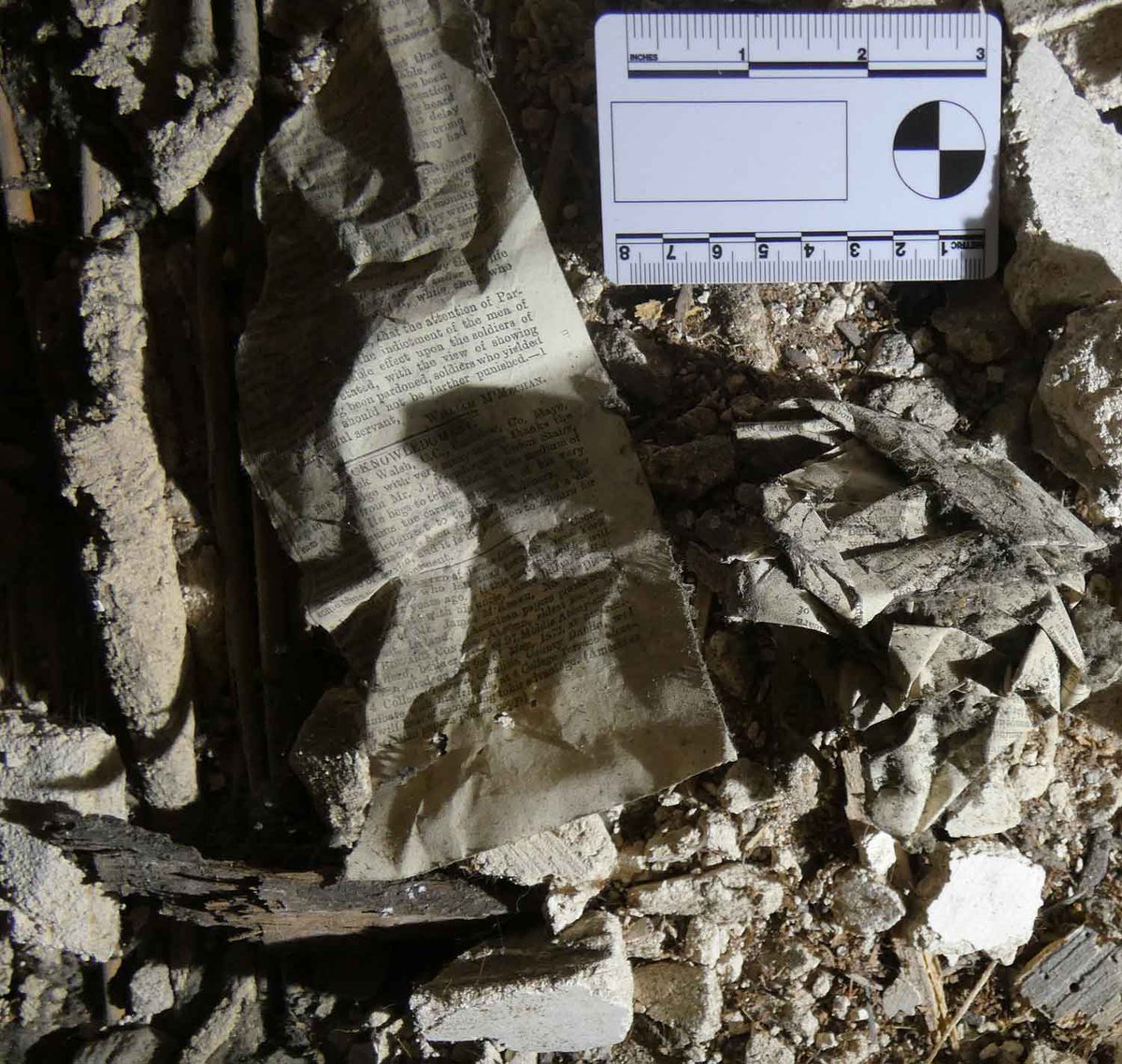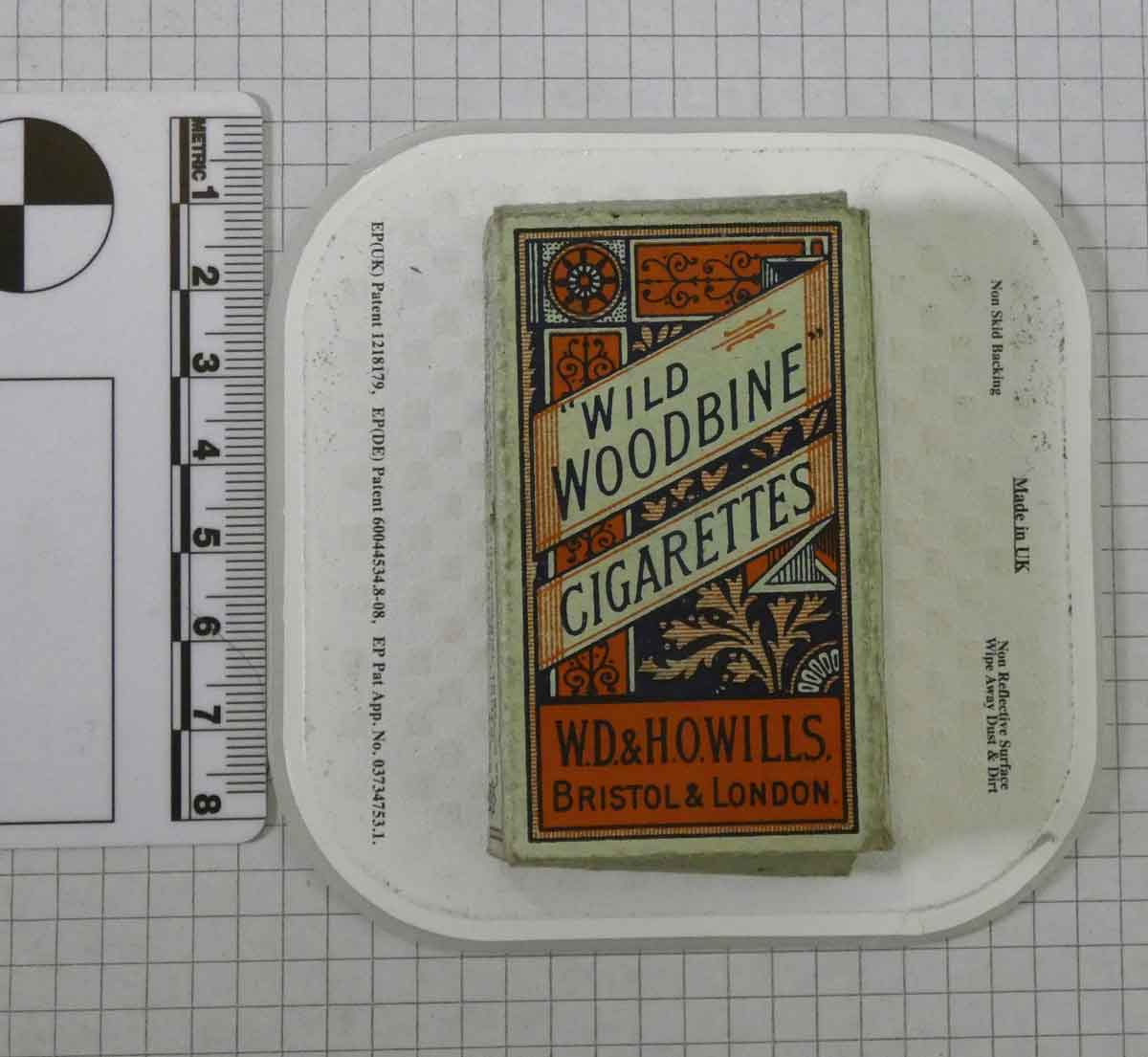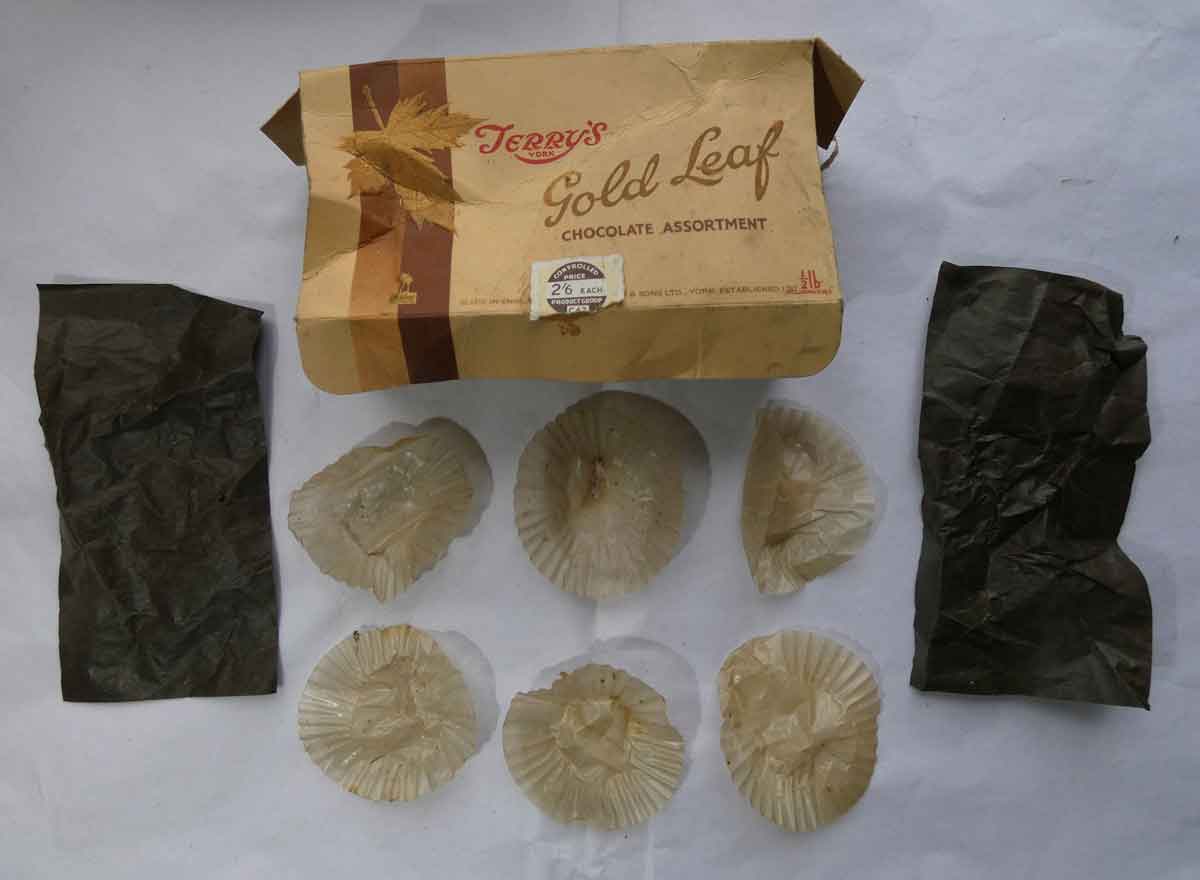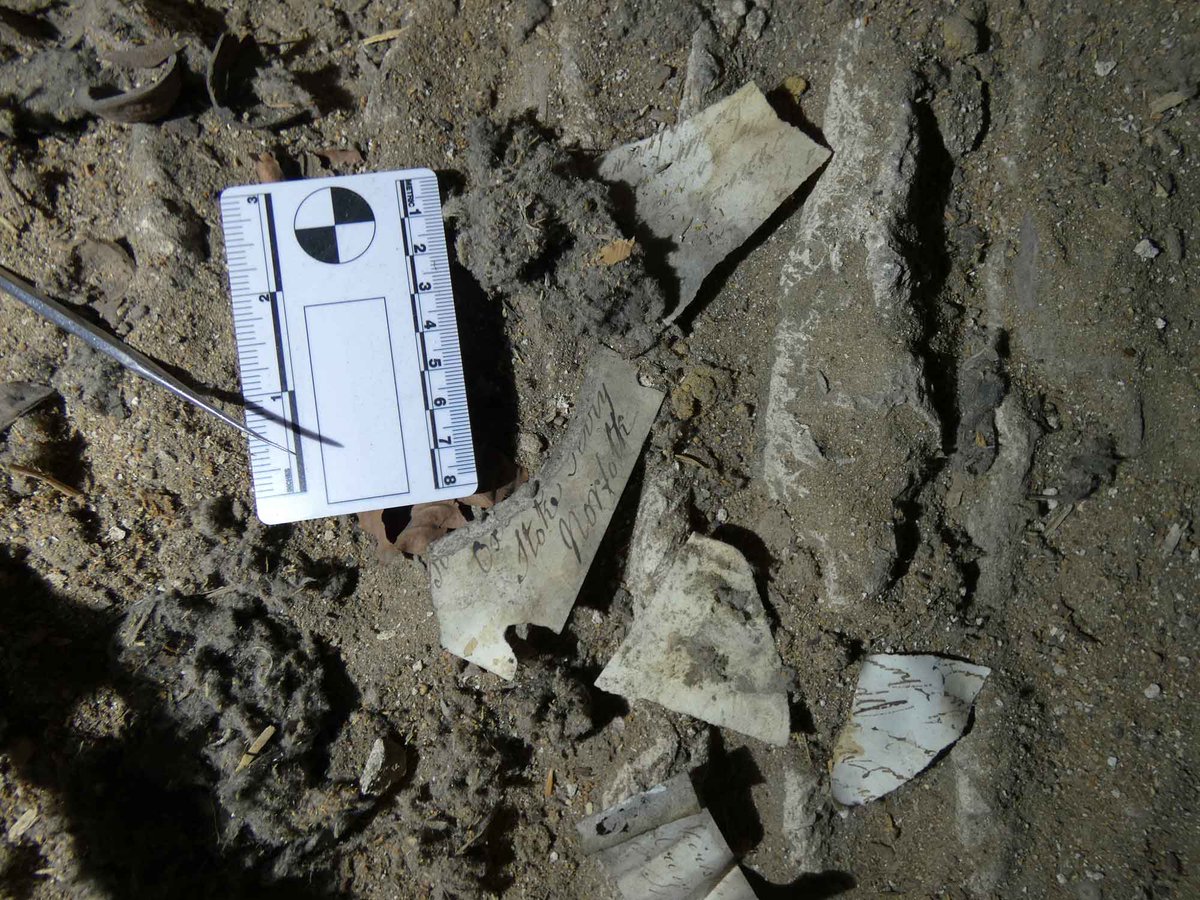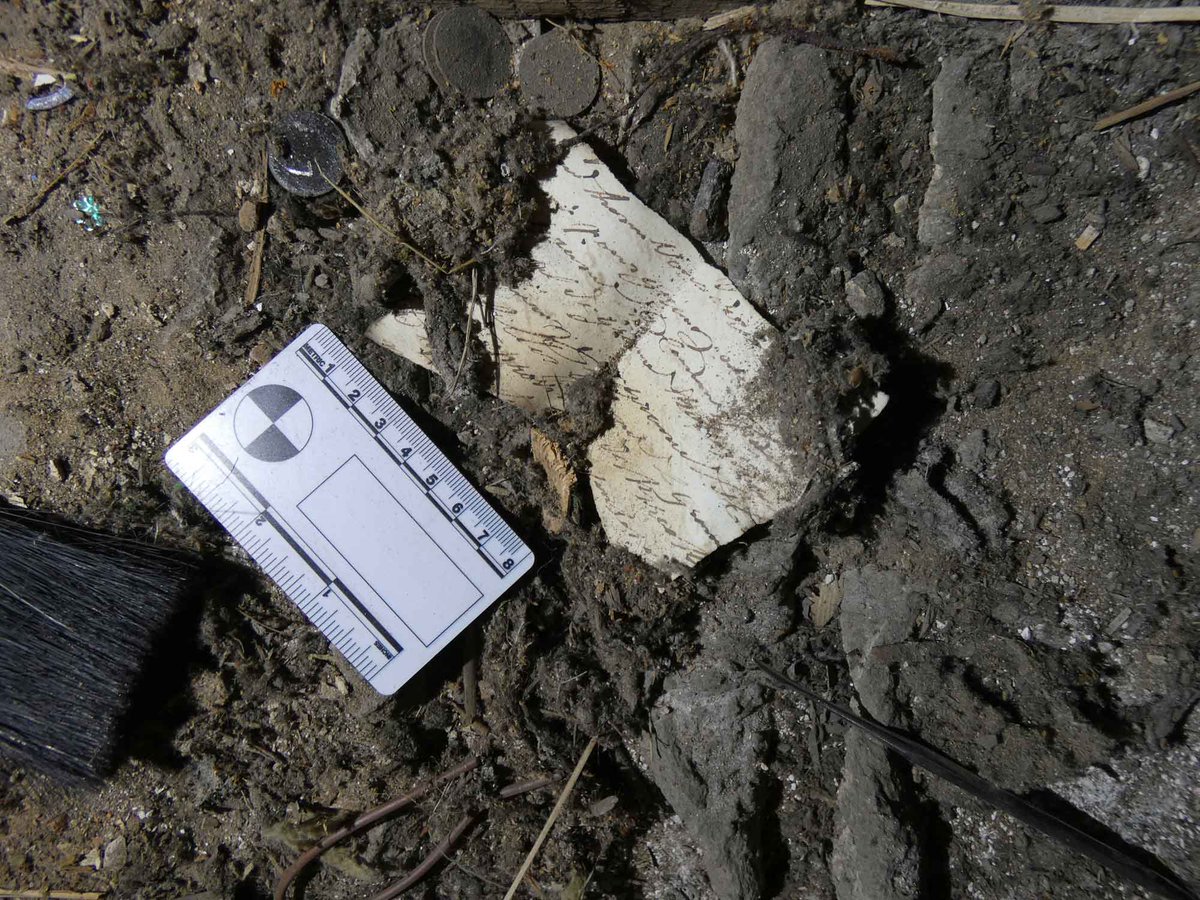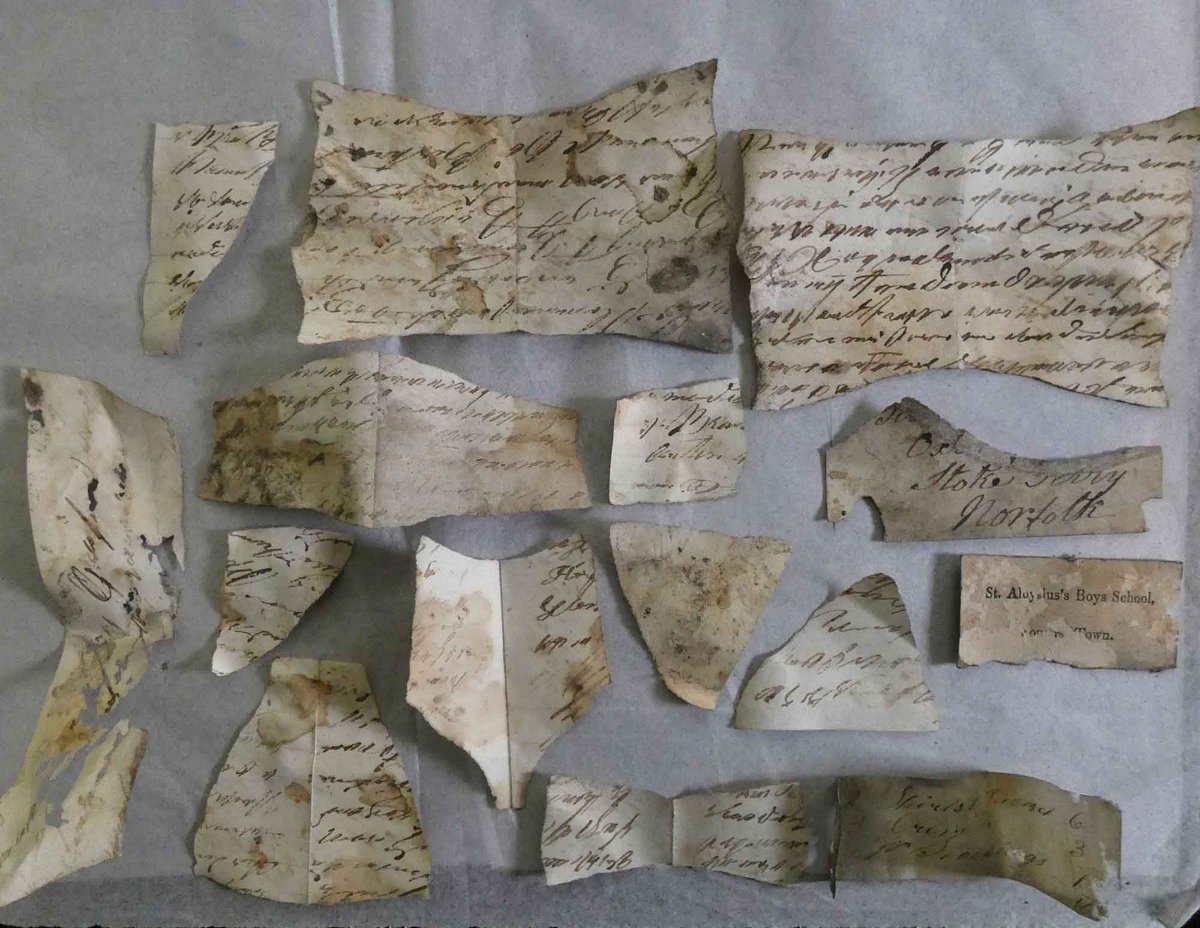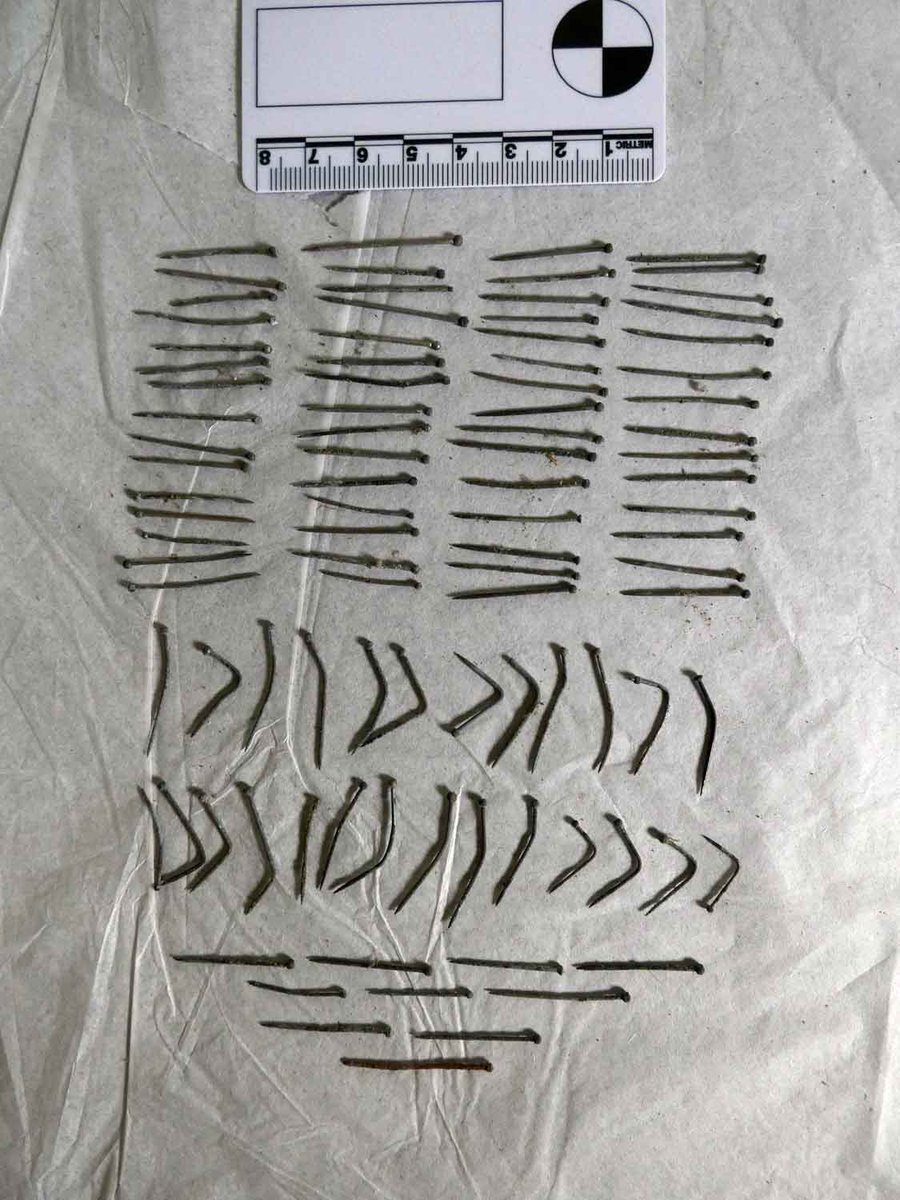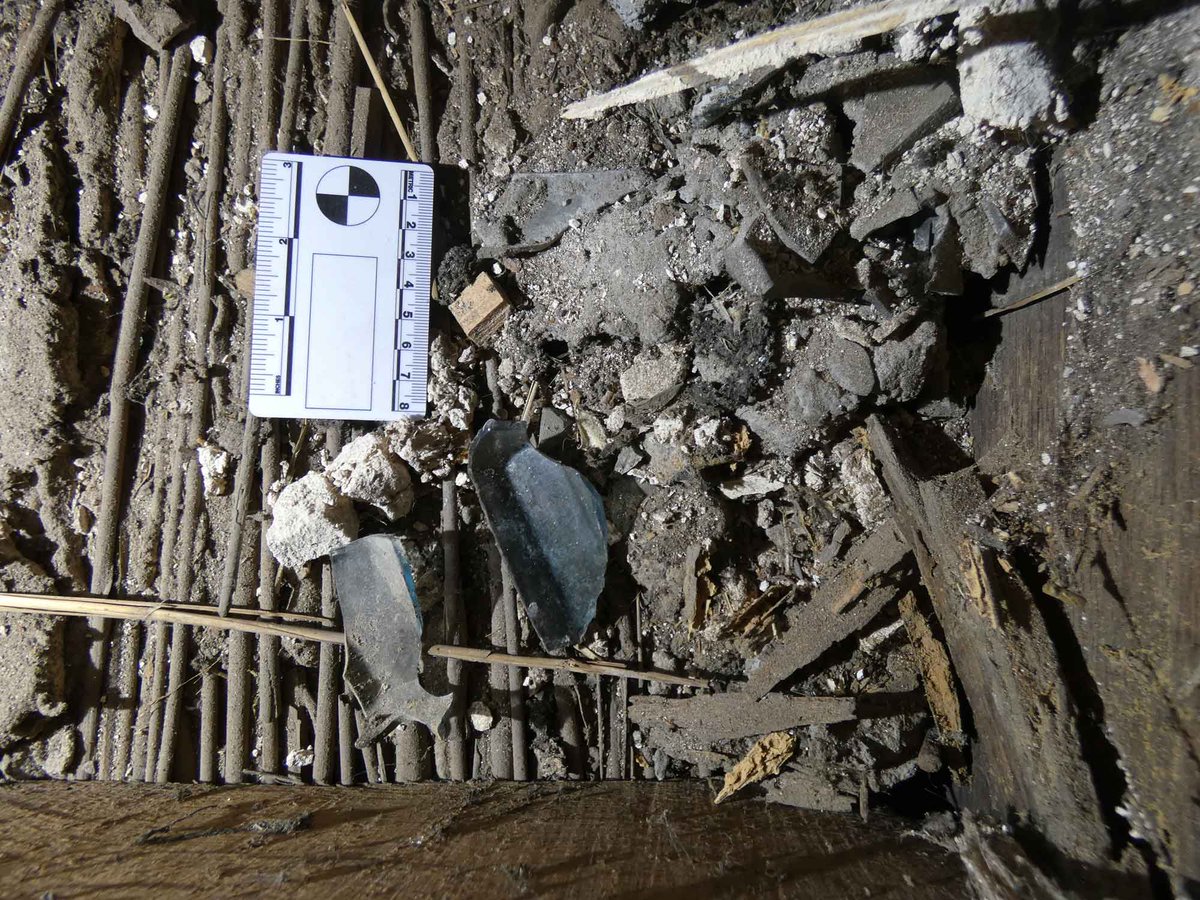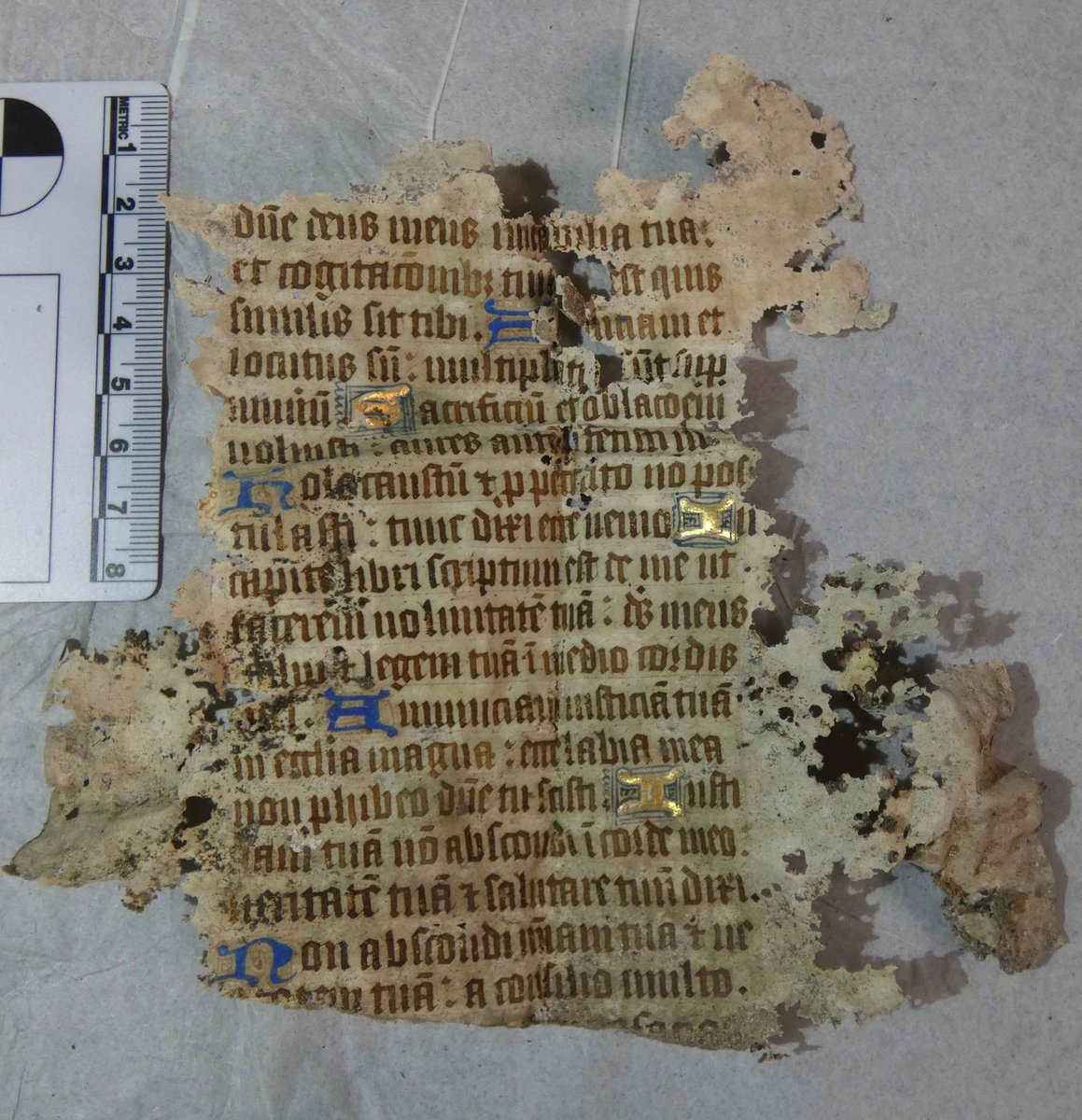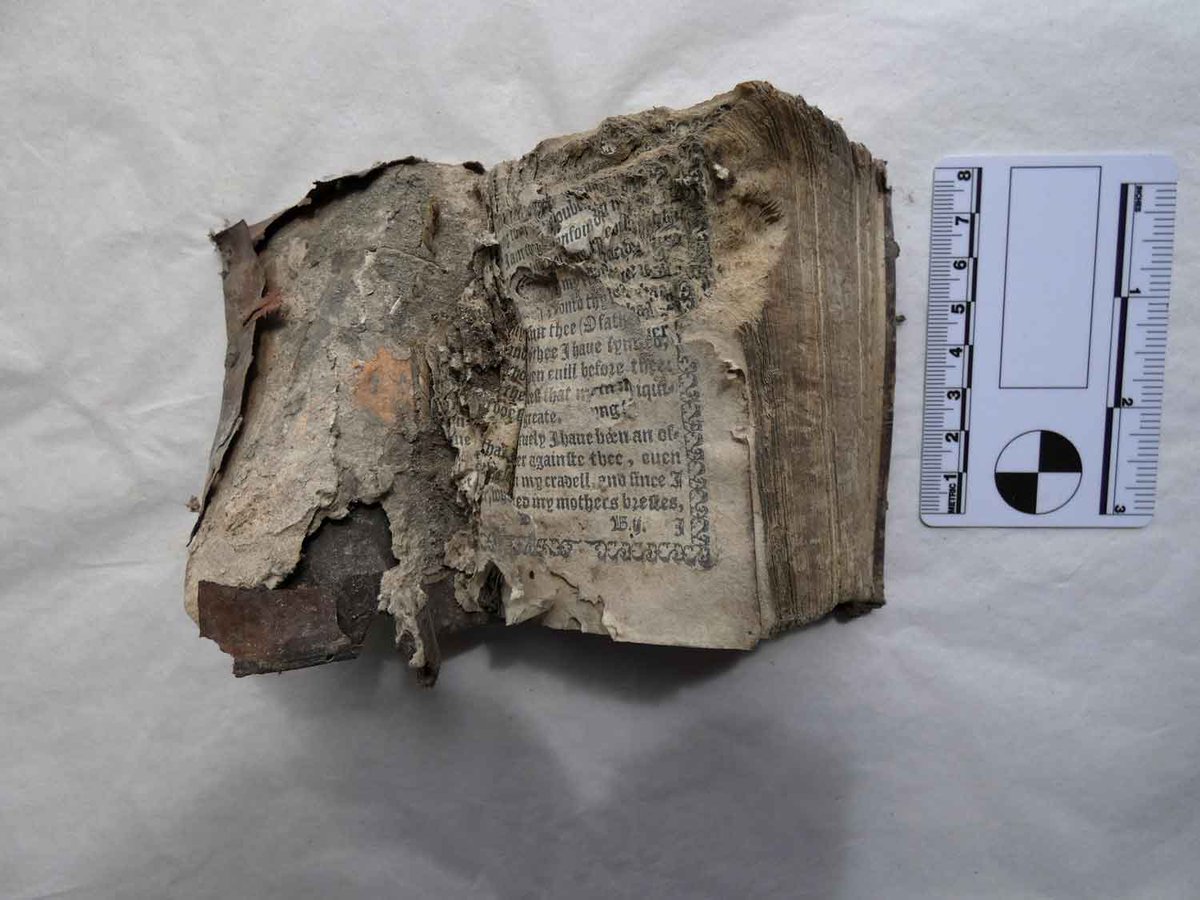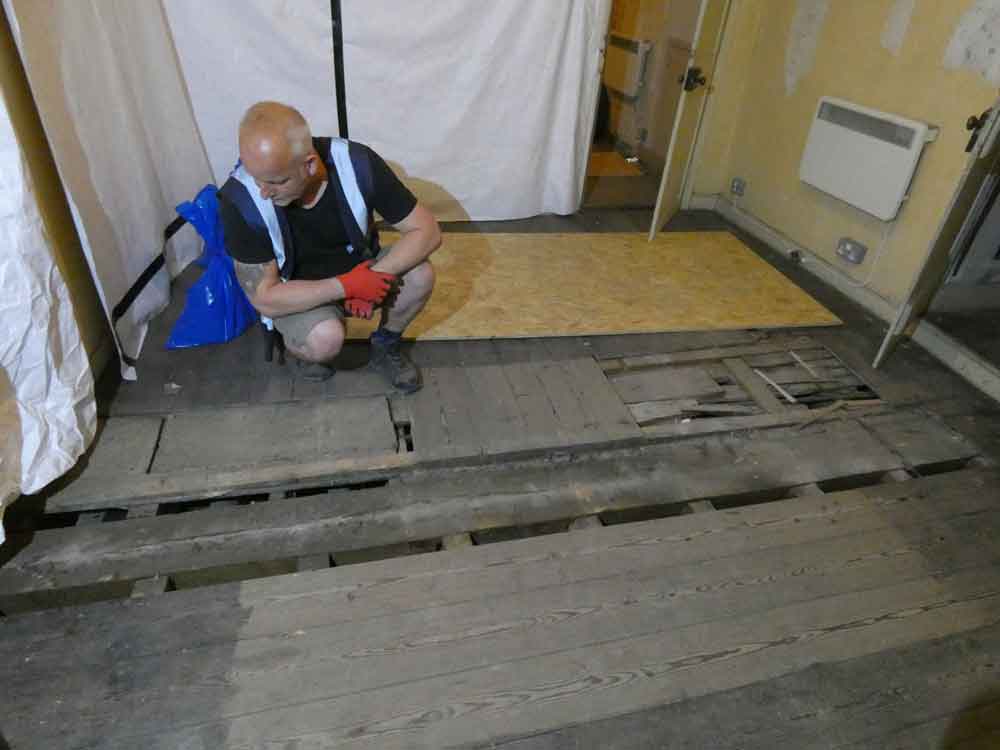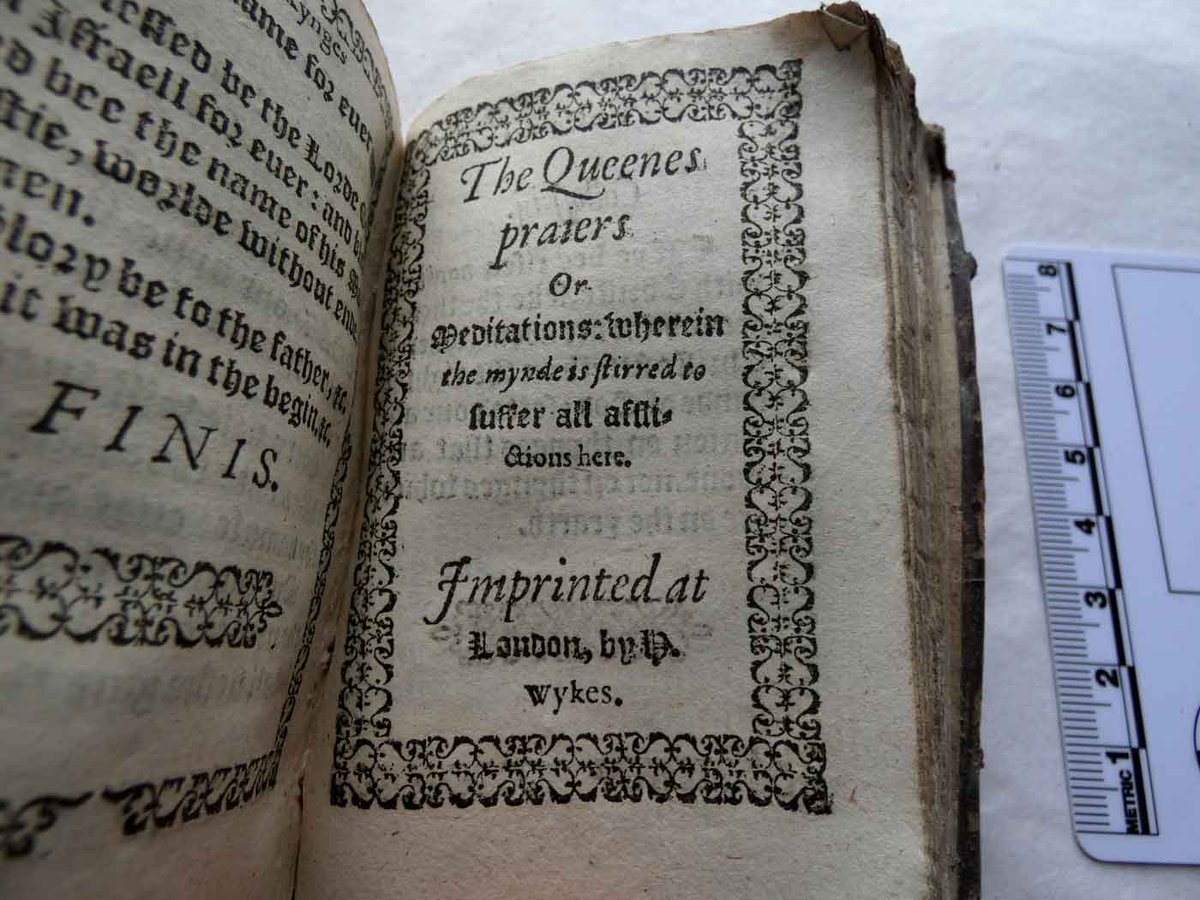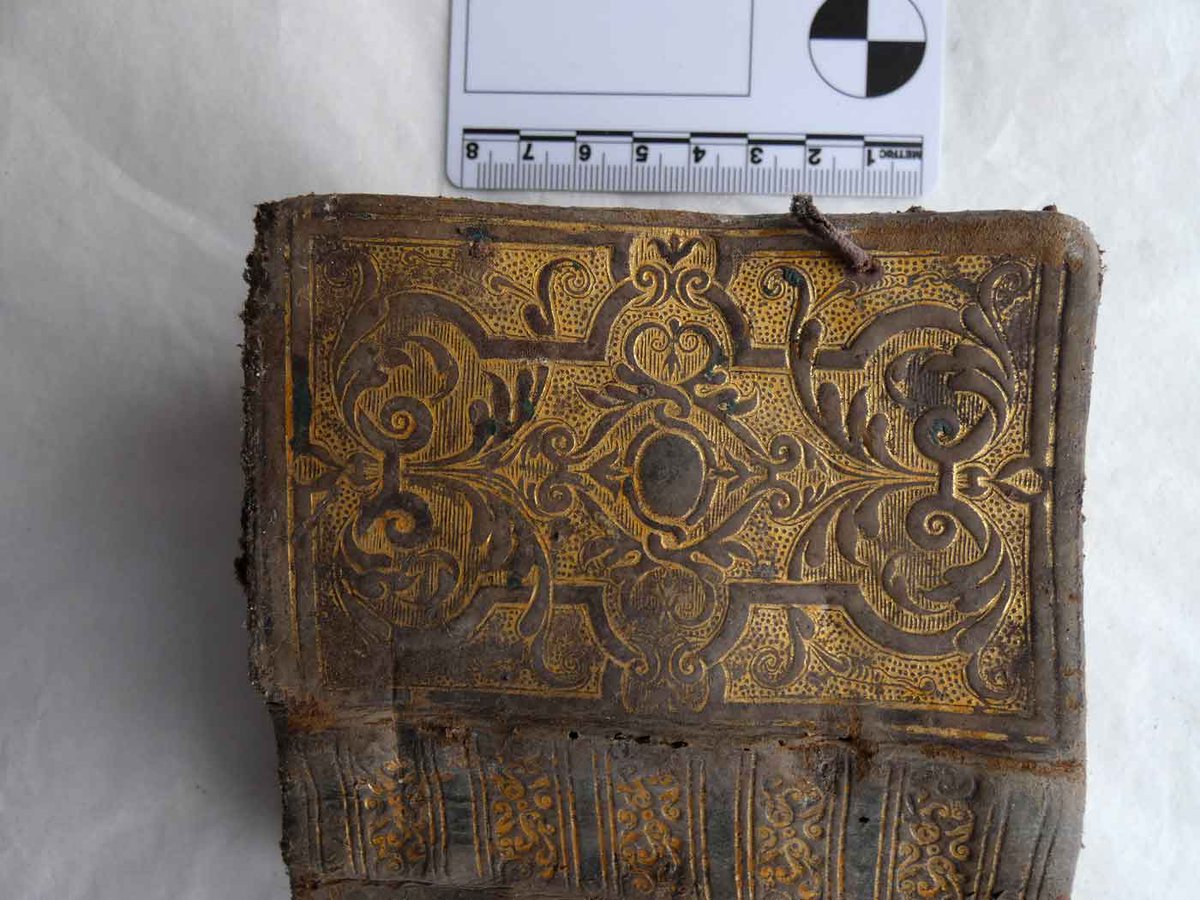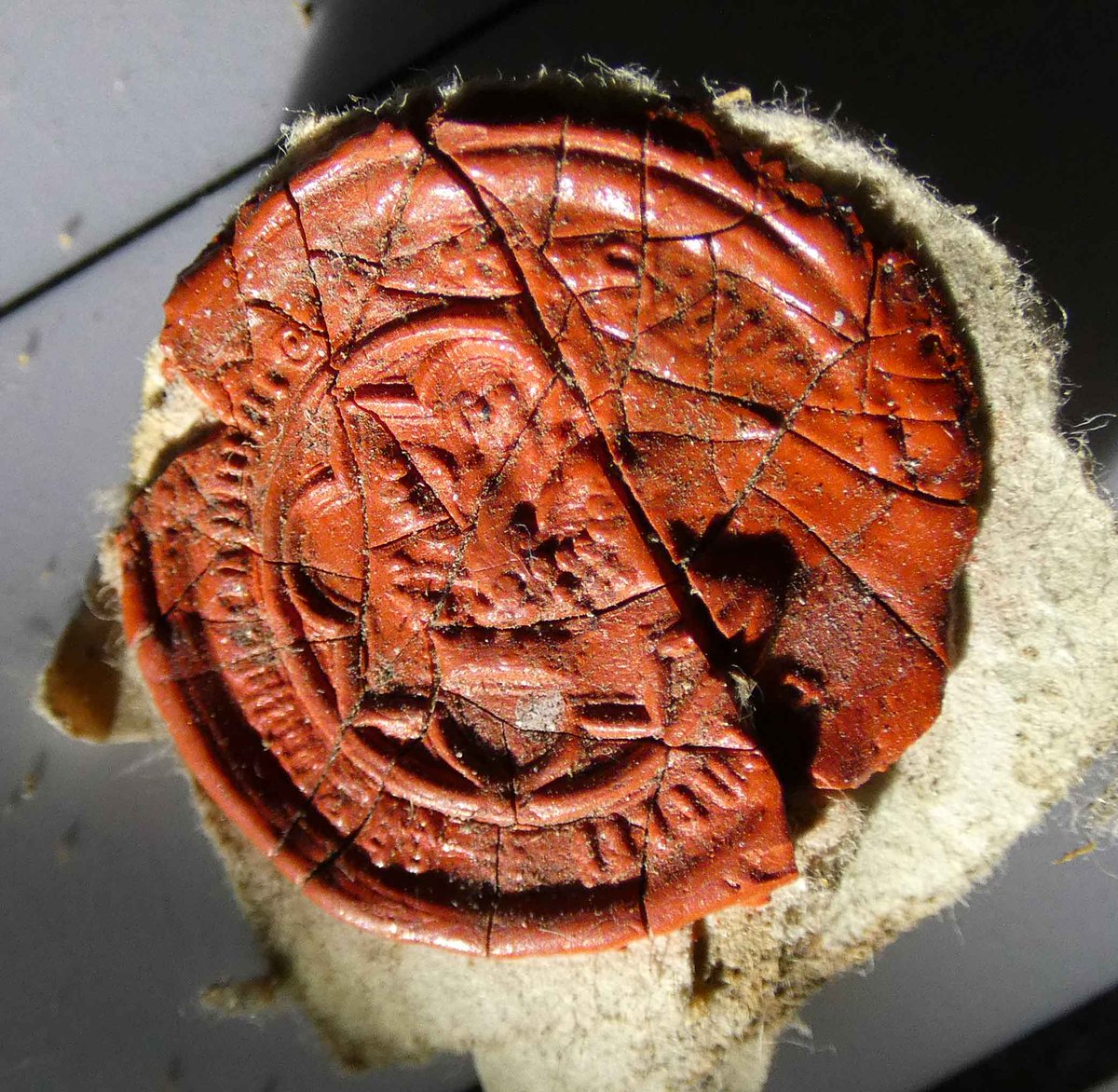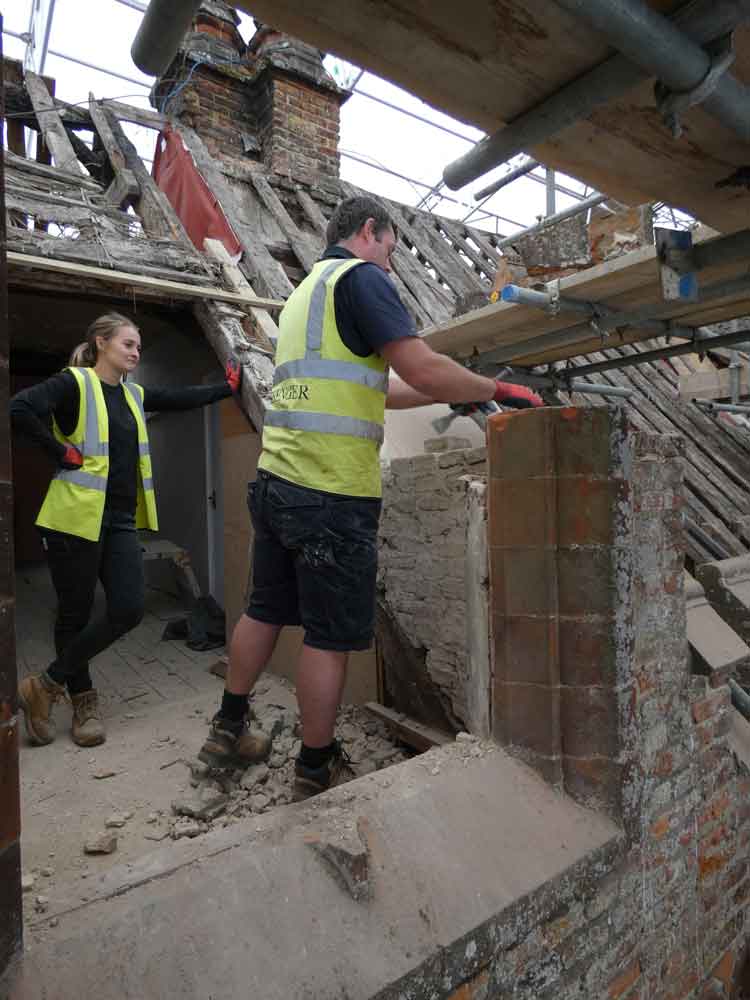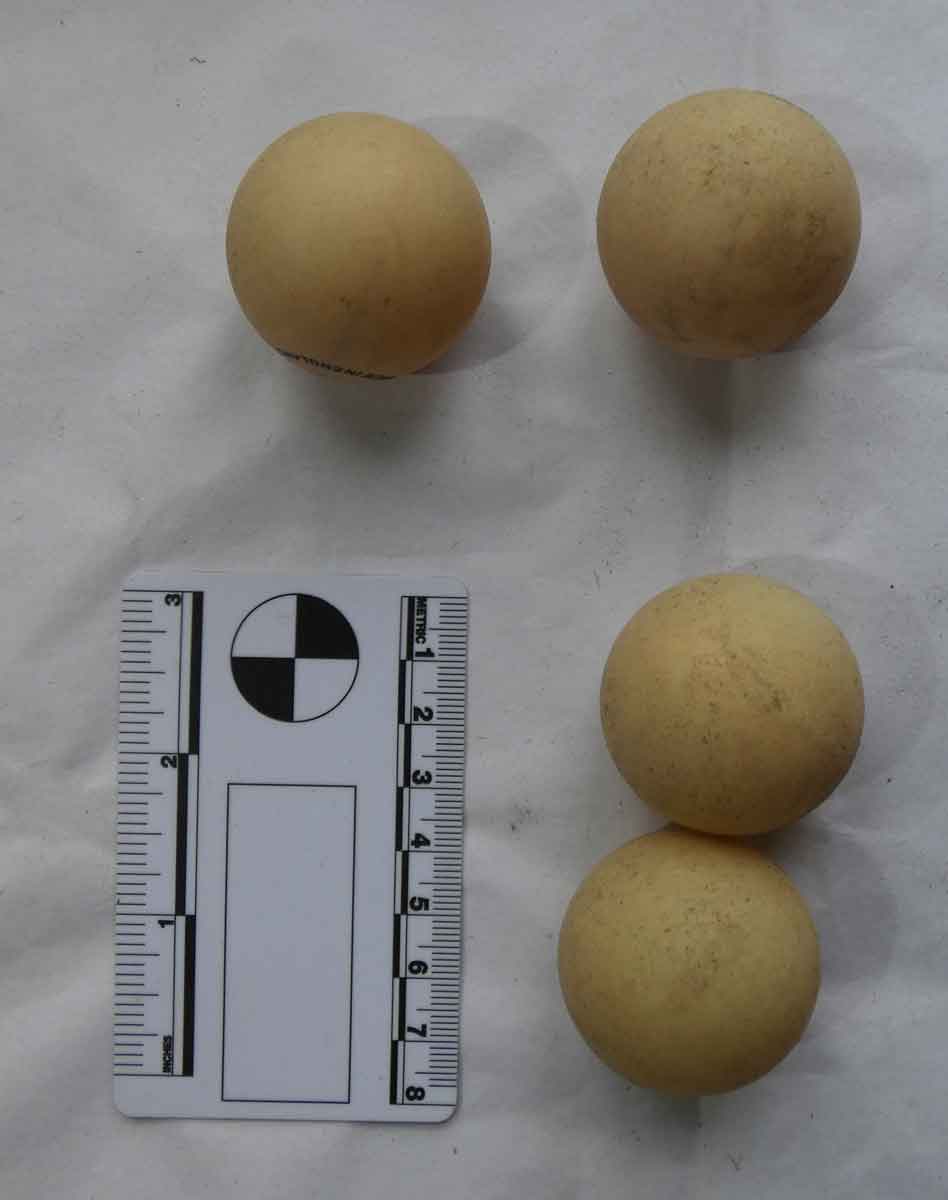Given today& #39;s news about the discoveries made at the National Trust& #39;s Oxburgh Hall in Norfolk, a brief thread about why we were there, and what was found. It isn& #39;t every day you recover medieval manuscripts, Tudor books, and C16th clothing from beneath the floor. #Thread
Oxburgh hall was originally built in the late C15th for the Bedingfeld family - who still occupy part of the site today (waves at Mary). Although much altered over the years it is today largely known for its distinctive brick built gatehouse.
In 2016 something rather dramatic happened at Oxburgh. One of the C19th dormer windows - comprising of a ton or so of brick and tile, slid off the roof and landed in the courtyard. Later examination showed that the dormers, and the roof, had major structural problems.
As a result the house is currently undergoing a £6,000,000 restoration and repair programme, that has involved over 31 miles of scaffolding, and a roof being placed over the whole building. It& #39;s a work or art!
A lot of the later timber frame at Oxburgh is suspect, and needs to be inspected by our lovely team of engineers. This means lifting floorboards, exposing void spaces, and removing the entire roof. An amazing opportunity to learn more about the house, and its many changes.
Unfortunately, then came Covid19 and lockdown. Most of the NT staff were furloughed, and I was asked if I would carry out the archaeology work, very much on my own, with full PPE, and full social distancing. Under the floor.
My role was, amongst other things, to carry out a fingertip search beneath the boards, and recover any artefacts that were there. The detritus of life, dropped beneath the gaps in the floorboards. And we didn& #39;t expect to find too much.
Many of the floorboards had previously been lifted, for earlier repairs, or just the running of electrical cables. And the earliest finds suggested that most of the finds would be modern. Fag packets dropped by previous builders. That kind of thing.
We did find a complete box of chocolates, from the 1940s - rationed contraband perhaps? All the chocolates had gone, but every wrapper and the box had been neatly hidden beneath the floor. Terry& #39;s Gold Leaf.
It was only when we got into the north-western range that things changed. Here we found an area where the boards had never been lifted before, and beneath was a thick layer of debris. So thick it had to be excavated with a trowel & dental pick.
The deposit was also bone dry, the moisture being drawn out by a layer of lime plaster beneath, which created a perfect environment for preservation of even the most delicate artefacts. And artefacts there were. Hundreds of them.
The most exciting were fragments of documents, mainly dating from the C17th and C18th, which had been cut up and recycled. Perhaps as sewing patterns.
There was very clear evidence of sewing having taken place there too, with thread, buttons, beads, needles, and pins all coming out of the debris. Hundreds of pins! 749 pins from an area of about 2.5 sq metres. Each still damned sharp!
However, the real treasures turned out to be in the room next door - or rather under it - in the shape of two massive and ancient rat& #39;s nests. It was utterly filthy work, and there is nothing like spending all day covered in rat crap to encourage social distancing.
The nests were full of artefacts. From one I recovered over 200 pieces of textile - fragments of clothing dating all the way back to the C16th - as well as fragments of early music, bits of early printed pages, and handwritten documents.
However, the two star finds weren& #39;t found by me at all - but by the builders - all of whom got the archaeology & #39;bug& #39;. The first was found by Rob Jessop, who literally pulled a page of a C15th manuscript out of the rubble, passed it to me, and quietly asking & #39;is this anything& #39;.
Rob& #39;s was a hard act to follow, but Woody and Steve were up to the task. Only two weeks ago, whilst removing a piece of wall-plate, they recovered an almost intact late C16th book from amongst the debris.
This is Steve. Steve is feeling smug, so I& #39;m threatening him here with the prospect of another rat& #39;s nest.
Steve is not keen...
Steve is not keen...
The book is a copy of & #39;The King& #39;s Psalms& #39;, printed in London in 1568, and considering where it had been, it was in remarkably good condition. Only one other copy is listed as having survived, and that is in the British library.
Many of the artefacts will now require some form of conservation from NT specialists, but it is hoped that the best will go on display in the house where they were found. Adding just a little bit more to the story of Oxburgh Hall and the people who lived there. Finis.
And lastly - a shout out to the contractors at Messenger Group, and all the team at @OxburghHallNT , who carried on the project with a skeleton staff, in very difficult circumstances - and still smiled.
You know who you are.
You know who you are.
And if you want to see a bit more about the artefacts discovered at Oxburgh, check out this short film featuring NT star curator @AnnaForrest13 , who has led much of the research. https://www.youtube.com/watch?v=LBznVgKEwbk">https://www.youtube.com/watch...
You also need to know that all the amazing NT staff who made this project possible - the curators, conservators, textile specialists, and archaeologists - are now under threat of losing their jobs. Not all the tears shed on this project were of joy.
Balls.
https://twitter.com/arthistorynews/status/1295989644400746498">https://twitter.com/arthistor...
Balls.
https://twitter.com/arthistorynews/status/1295989644400746498">https://twitter.com/arthistor...

 Read on Twitter
Read on Twitter